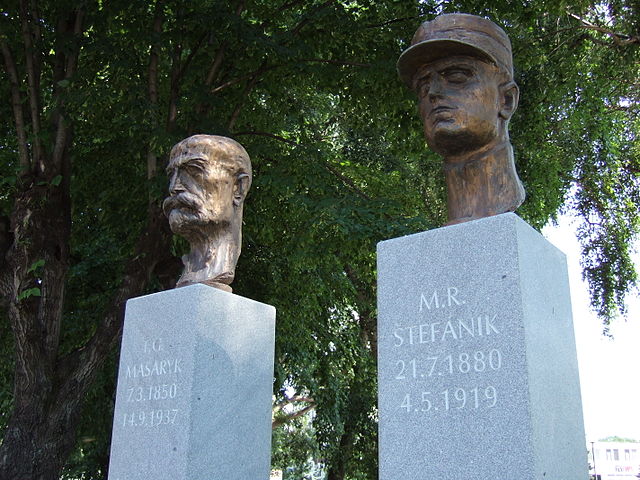The Sudetenland is the historical German name for the northern, southern, and western areas of former Czechoslovakia which were inhabited primarily by Sudeten Germans. These German speakers had predominated in the border districts of Bohemia, Moravia, and Czech Silesia since the Middle Ages. Since the 9th century the Sudetenland had been an integral part of the Czech state both geographically and politically.
Czech inscriptions smeared by Sudeten German activists, March 1938, Teplice
Ethnic Germans in the city of Eger (now Cheb) greeting Hitler with the Nazi salute after he crossed the border into the Czechoslovak Sudetenland on 3 October 1938
Volunteers of the Sudeten German Free Corps (German: Sudetendeutsches Freikorps) receiving refreshments from the local population in the city of Eger/Cheb)
Adolf Hitler drives through the crowd in Eger/Cheb on 3 October 1938
Czechoslovakia was a landlocked state in Central Europe, created in 1918, when it declared its independence from Austria-Hungary. In 1938, after the Munich Agreement, the Sudetenland became part of Nazi Germany, while the country lost further territories to Hungary and Poland. Between 1939 and 1945, the state ceased to exist, as Slovakia proclaimed its independence and Carpathian Ruthenia became part of Hungary, while the German Protectorate of Bohemia and Moravia was proclaimed in the remainder of the Czech Lands. In 1939, after the outbreak of World War II, former Czechoslovak President Edvard Beneš formed a government-in-exile and sought recognition from the Allies.
Czechoslovak troops in Vladivostok (1918)
Czechoslovak declaration of independence rally in Prague on Wenceslas Square, 28 October 1918
A monument to Tomáš Garrigue Masaryk and Milan Štefánik—both key figures in early Czechoslovakia
The car in which Reinhard Heydrich was fatally injured in 1942








